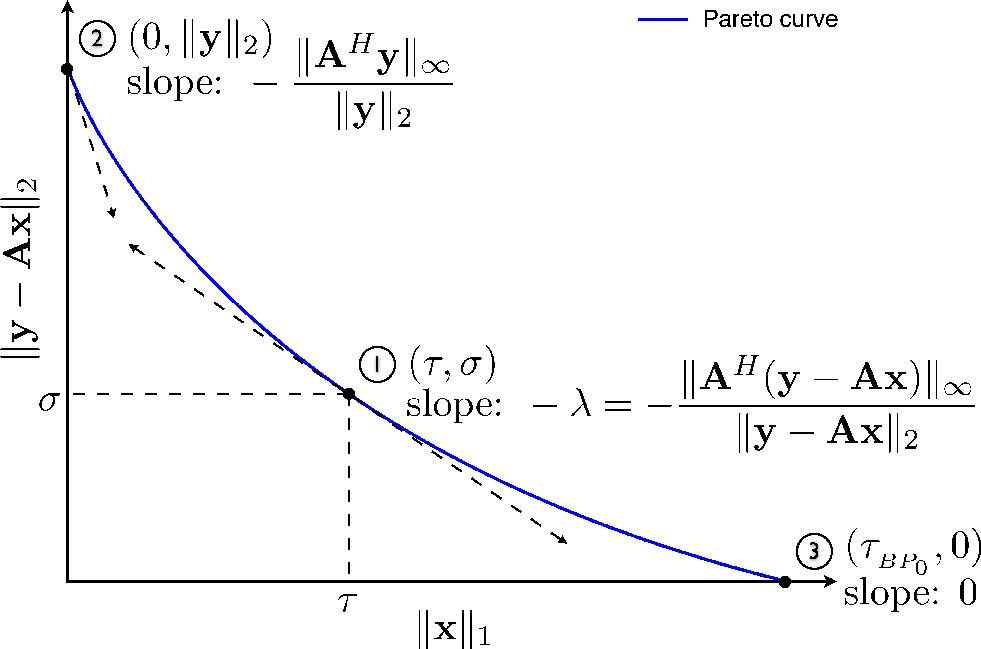|
|
|
|
New insights into one-norm solvers from the Pareto curve |
Figure 1 gives a schematic illustration
of a Pareto curve. The curve traces the optimal tradeoff between
![]() and
and
![]() for a
specific pair of
for a
specific pair of
![]() and
and
![]() in
equation 1. Point
in
equation 1. Point ![]() clarifies
the connection between the three parameters of QP
clarifies
the connection between the three parameters of QP![]() ,
BP
,
BP![]() , and LS
, and LS![]() . The coordinates of a point on the Pareto
curve are
. The coordinates of a point on the Pareto
curve are
![]() and the slope of the tangent at this point
is
and the slope of the tangent at this point
is ![]() . The end points of the curve--points
. The end points of the curve--points
![]() and
and ![]() --are
two special cases. When
--are
two special cases. When ![]() , the solution of LS
, the solution of LS![]() is
is
![]() (point
(point ![]() ). It coincides with
the solutions of BP
). It coincides with
the solutions of BP![]() with
with
![]() and
QP
and
QP![]() with
with
![]() . (The
infinity norm
. (The
infinity norm
![]() is given by
is given by
![]() .) When
.) When ![]() , the solution of
BP
, the solution of
BP![]() (point
(point ![]() ) coincides with the
solutions of LS
) coincides with the
solutions of LS![]() , where
, where ![]() is the one norm of the solution,
and QP
is the one norm of the solution,
and QP![]() , where
, where
![]() --i.e.,
--i.e., ![]() infinitely
close to zero from above. These relations are formalized as follows
in van den Berg and Friedlander (2008):
infinitely
close to zero from above. These relations are formalized as follows
in van den Berg and Friedlander (2008):

|
|---|
|
pcurve
Figure 1. Schematic illustration of a Pareto curve. Point |
|
|
|
|
|
|
New insights into one-norm solvers from the Pareto curve |